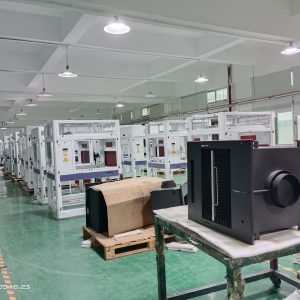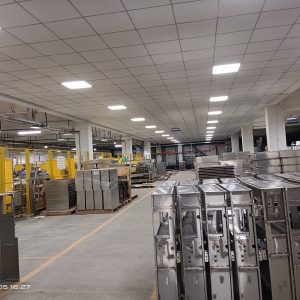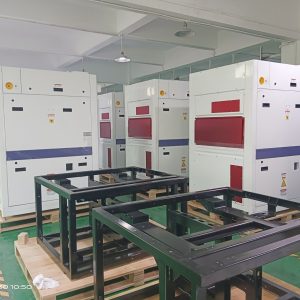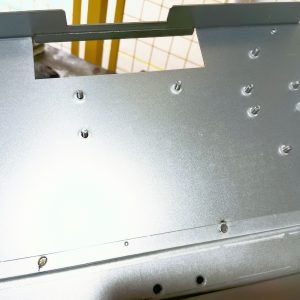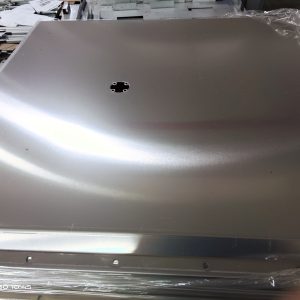Making a metal box involves several key steps, from design to final assembly. Here’s an overview of the process:
1. Design and Planning
- Blueprint Creation: The design of the box is first created, typically using CAD (Computer-Aided Design) software. The design includes dimensions, shapes, and specifications for the metal type.
- Material Selection: Based on the design, the appropriate type of metal (e.g., steel, aluminum, stainless steel) is chosen.
2. Cutting the Metal
- Sheet Metal Selection: A sheet of metal is selected based on the thickness required for the box.
- Cutting: The metal sheet is cut into the required shapes and sizes using various methods:
- Shearing: A large blade is used to cut straight lines.
- Laser Cutting: A high-powered laser cuts the metal, often used for intricate shapes.
- Plasma Cutting: Plasma torches cut through thicker metals using high-temperature plasma.
3. Forming and Bending
- Bending: The metal pieces are bent into the desired shape using a brake press or a hydraulic press. This forms the sides, top, and bottom of the box.
- Rolling: If the box has curved edges or rounded parts, rolling machines are used to shape the metal.
4. Joining
- Welding: The different pieces of the metal box are joined together using welding techniques such as MIG, TIG, or spot welding. This fuses the metal pieces together.
- Riveting: Sometimes, rivets are used to join parts of the box, especially if it needs to be disassembled later.
- Bolting: Screws or bolts may be used for parts that require flexibility in assembly.
5. Surface Treatment
- Deburring: The edges of the metal box are smoothed to remove sharp burrs or rough edges.
- Surface Finishing: Depending on the application, the box may be polished, sanded, or brushed to achieve a smooth finish.
- Painting or Powder Coating: The box may be painted or powder-coated to protect it from corrosion and improve its appearance.
- Galvanizing: For additional corrosion resistance, the box may be dipped in molten zinc in a process called galvanization.
6. Final Assembly
- Adding Hinges, Latches, or Handles: Any additional components like hinges, latches, or handles are attached.
- Inspection: The box is inspected for quality, ensuring that all dimensions are accurate, the welds are strong, and the surface finish is consistent.
7. Packaging and Shipping
- Packaging: The finished metal box is packaged for shipping, ensuring it is protected from damage during transport.
- Shipping: The box is then shipped to the customer or distributor.
This process can vary slightly depending on the size and complexity of the metal box, as well as the specific requirements for its use.
Click sheet metal fabrication company china or china sheet metal forming manufacturers to learn more about sheet metal fabrication services.
From china sheet metal fabrication factory– JIATONG
